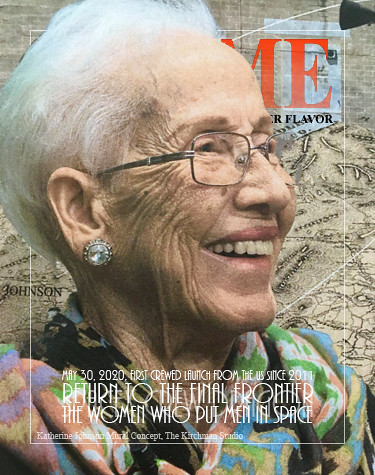
Volume XVIII, Issue XXa: Return to the Final Frontier
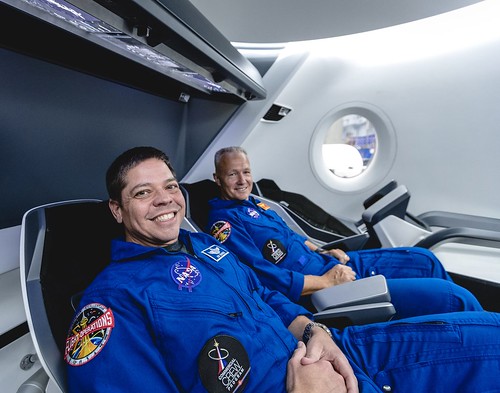
Astronauts Douglas Hurley and Robert Behnken prepare for their historic flight. NASA Photo.
Crewed Flight to the ISS
NASA’s SpaceX Demo-2 mission will return U.S human spaceflight to the International Space Station from U.S. soil with astronauts Robert Behnken and Douglas Hurley on an American rocket and spacecraft for the first time since 2011. In March 2020, at a SpaceX processing facility on Cape Canaveral Air Force Station in Florida, SpaceX successfully completed a fully integrated test of critical crew flight hardware ahead of Crew Dragon’s second demonstration mission to the International Space Station for NASA's Commercial Crew Program; the first flight test with astronauts onboard the spacecraft. Behnken and Hurley participated in the test, which included flight suit leak checks, spacecraft sound verification, display panel and cargo bin inspections, seat hardware rotations, and more. The spacecraft will lift off from Pad 39A on May 30, 2020 at approximately 3:22 EDT. NASA Will Provide Live Coverage [click to watch].
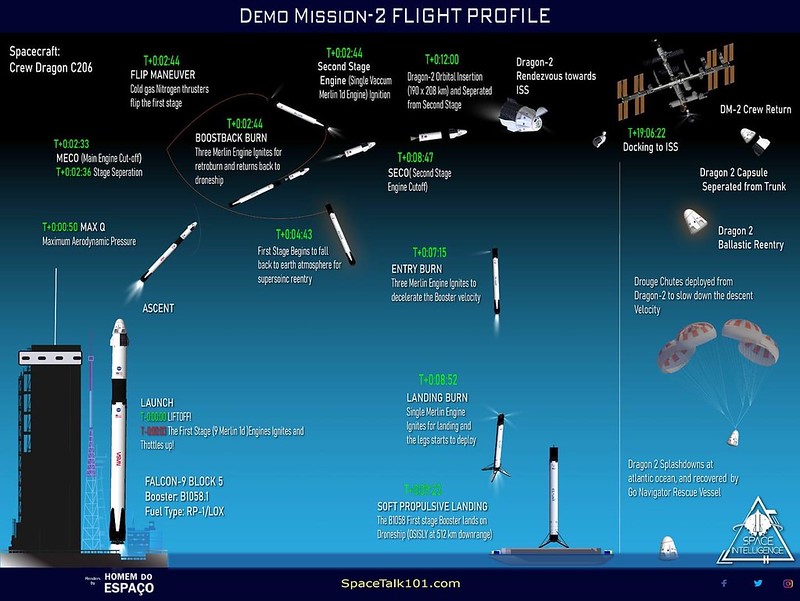
Tentative Schedule of the Mission
May 29, Friday
10 a.m. - Administrator Countdown Clock Briefing (weather permitting) featuring:
NASA Administrator Jim Bridenstine
Kennedy Space Center Director Bob Cabana
NASA astronaut Kjell Lindgren
NASA astronaut Nicole Mann
May 30, Saturday
11 a.m. – NASA TV launch coverage begins
3:22 p.m. – Liftoff
4:09 p.m. – Crew Dragon phase burn
4:55 p.m. – Far-field manual flight test
TBD p.m. – Astronaut downlink event from Crew Dragon
6:30 p.m. – Postlaunch news conference at Kennedy
Administrator Bridenstine
Kathy Lueders, manager, NASA Commercial Crew Program
SpaceX representative
Kirk Shireman, manager, International Space Station Program
NASA Chief Astronaut Pat Forrester
(Editor's note: NASA TV's coverage of the mission will be continuous from 11 a.m. Saturday through the post-arrival news conference on Sunday.)
May 31, Sunday
TBD a.m. – Astronaut downlink event from Crew Dragon
10:29 a.m. – Docking
12:45 p.m. – Hatch Open
1:05 p.m. – Welcome ceremony
3:15 p.m. – Post-arrival news conference at Johnson
NASA Administrator Jim Bridenstine
Johnson Space Center Director Mark Geyer
NASA Chief Astronaut Pat Forrester
June 1, Monday
11:15 a.m. – ISS Expedition 63 Crew News Conference with Commander Chris Cassidy and Flight Engineers Bob Behnken and Doug Hurley of NASA
12:55 p.m. – ISS Expedition 63 In-Flight Event with SpaceX Officials and Employees in Hawthorne, California
June 2, Tuesday
9:20 a.m. – SpaceX employee event and Class of 2020 Mosaic presentation, with NASA astronauts Chris Cassidy, Bob Behnken, and Doug Hurley
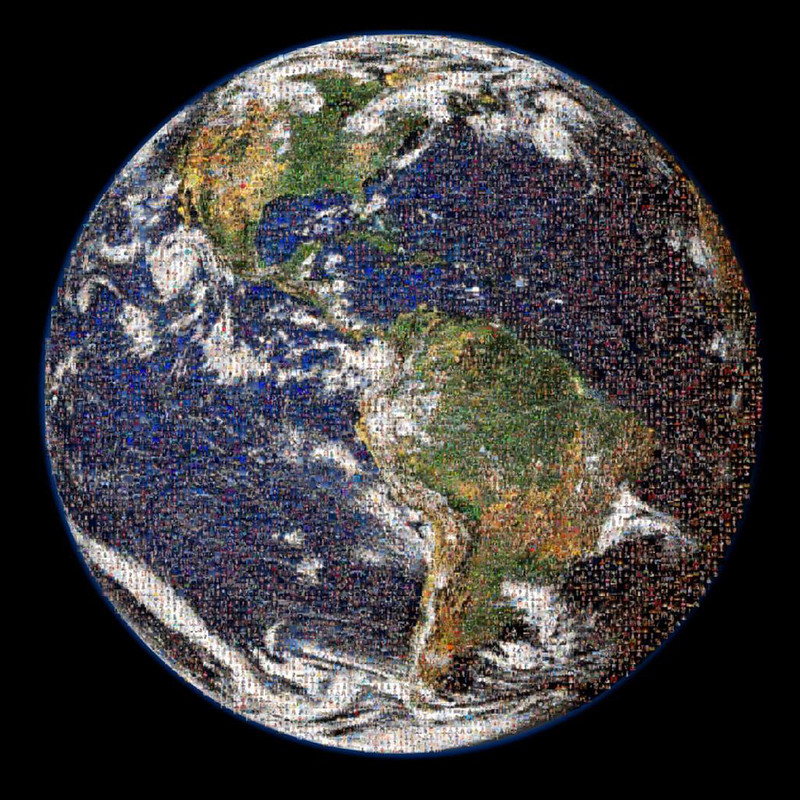
To celebrate the 2020 graduating classes, SpaceX and NASA put out a call for students to send in their photos to go to space. The student photos will fly aboard SpaceX's Crew Dragon capsule on the Demo-2 mission, which will take off for the International Space Station (ISS) on May 30 from NASA's Kennedy Space Center in Florida. Here is the composite image of the photos.
Live Feed of NASA TV.
America at Her Best, “Tough and Competent”
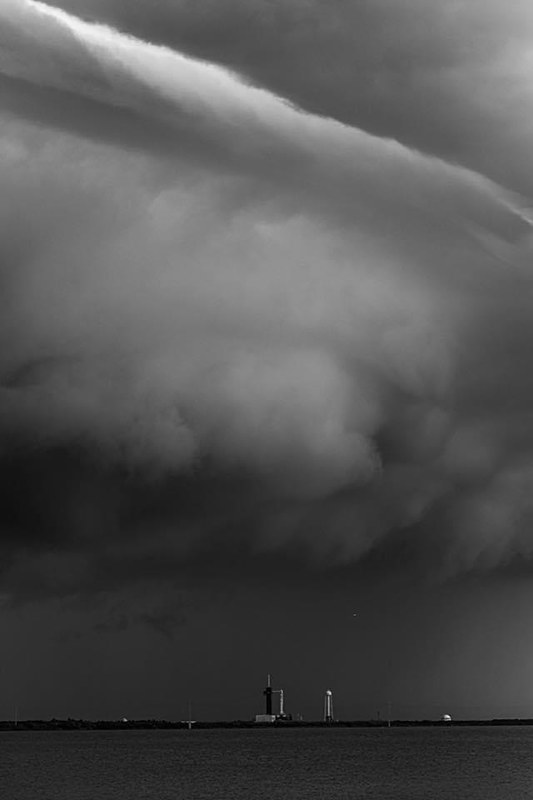
The storm cells that caused the scrub of Wednesday's launch are seen in this SpaceX photo.
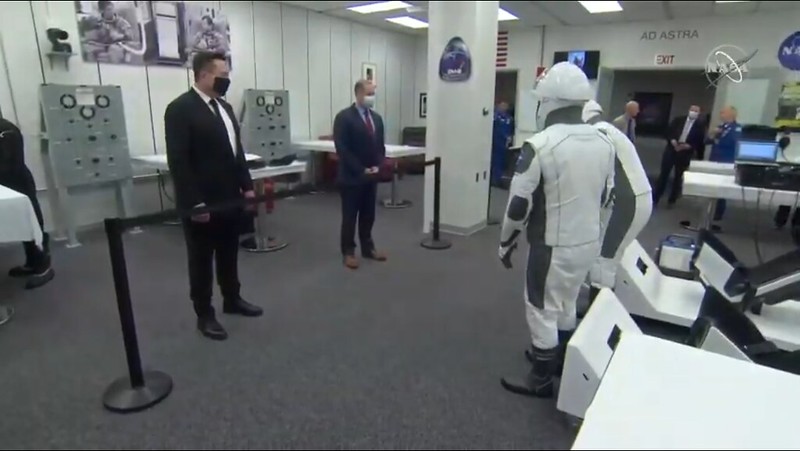
Elon Musk wishes the astronauts a safe trip after suit-up on May 27.
Wednesday was a wonderful day for me. I was watching America at her best. As NASA prepared for the first launch of a crewed spacecraft from the cape in 9 years, a storm system bore down on what was otherwise a flawless preflight sequence. Astronauts were in the spacecraft and fueling was underway but a launch would have violated two weather rules with the charged atmosphere and the menacing storms. Interestingly, NASA and SpaceX officials had fielded a question about ‘Launch Fever’ in a press conference the night before. ‘Launch Fever’ or ‘Go Fever’ is actually a serious concern. Apollo 1 had many problems that if called out would have grounded it, but Gus Grissom, Ed White and Roger Chaffee pressed on. There was pressure to keep the program on schedule. As the astronauts tried to work out a problem in the communication system a frayed wife caused a spark in the oxygen pressurized cabin. The resulting fire killed the three astronauts.
That terrible event created a new culture in NASA. Flight Director Gene Kranz made all of his staff write the words “TOUGH and COMPETANT” on their whiteboards. They would never take anything for granted. They would never be afraid to say “STOP!” No doubt, that ethic was in part responsible for Apollo’s great safety record. In a very dangerous environment, NASA learned how to manage risk. The strengths of many talented people were brought together to pull off a mission that required incredible focus and courage. Katherine Johnson and many other great mathematicians wrestled with the equations that would put the astronauts on the correct course. Although it might not have looked it in the 1960s, NASA was already building an organization that would require an incredibly diverse group of people. At MIT, Margaret Hamilton created much of the computer code necessary for the mission. At Langley, Dorothy Vaughn supervised a group of programmers. Mission Control might not have looked very diverse, but the hundreds of thousands of workers who made the missions happen were. It was America at her best.
Wednesday saw an amazing display of that best. Mission Control has evolved and so has NASA’s culture of safety. Elon Musk spoke of the responsibility he felt to the astronauts and their families. SpaceX and NASA are determined to deliver a safe and reliable spacecraft. With the world watching, as the storms came in, they had the courage of their conviction to call off the launch. A NASA administrator remarked: “It is always better to be on the ground wishing you were flying than to be flying wishing you were on the ground.” I thought of Pete Conrad’s Apollo 12. It was launched during a thunderstorm and was struck twice by lightning. The entire flight program dropped out. Houston asked them to try a reset: “SEC to Auxiliary.” Alan Bean knew what that was and successfully reset the spacecraft’s controls. There was still concern that the parachutes could have been damaged. After Apollo 12 flew, storms were considered a reason to scrub a mission. Sadly, the shuttle era saw the tragic loss of Challenger and Columbia. The shuttles had aged and the tile heat shields were problematic.
I wanted to see a launch Wednesday, but am so glad I saw something better!
The astronauts say goodbye to their families on Wednesday.
These Women Put Man on the Moon
Watching those old space shows as a child, it was pretty obvious that you just got into the spacecraft, took off and flew to wherever in the solar system you wanted to go. It looked deceptively simple – and it was! We had no reason to doubt that man had landed on the moon because Buck Rogers had made it look simple. But when President John F. Kennedy gave the imperative to actually put a man on the moon and bring him safely home, it immediately became clear that the problem was not so simple.
In order to go to the moon, you had to take off and steer a course to where the moon would be when you got there. You had to account for parabolic ascent and elliptical orbits. Your travel map existed in the realm of complex geometry and required brilliant mathematicians to chart. Fortunately the NASA Space Task Group at Langley Research Center had just such a group of mathematicians. They were mostly women and quite a few of them were African American! If you have seen the movie Hidden Figures you learned the stories of three of them, but the complex world of spaceflight engineering actually demanded many more. Many of them worked in the West Computing Group at Langley. Here Katherine Johnson and her colleagues mapped the stars for the astronauts. Yes, they literally mapped the heavens, so that the astronauts could navigate by the stars should their machine computers fail them.
This became essential in missions like Apollo 13, where the spacecraft was actually shut down at a time when critical course corrections had to be made. Katherine Johnson was one essential backup person who the navigation controllers in ‘the trench’ at Mission Control called in to calculate the trajectories of the revised mission. This was essential as you had to sling the Command Module and Lunar Module assembly around the moon about 65 miles from the surface. A miscalculation could have sent the spacecraft crashing to the lunar surface or missing the gravitational effect of the moon entirely – hurtling into deep space with no possibility of return.
To me, the complex mapping, verified by many earth orbit tests, is one reason I have little patience for the skeptics who say the lunar landing was somehow ‘faked.’ The careful calculations and critical launch windows only became known because the people who designed the mission really had to do it.
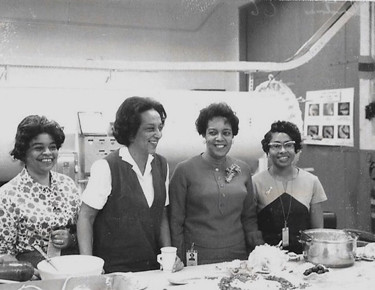
Some of Langley's first computers. NASA Photo.
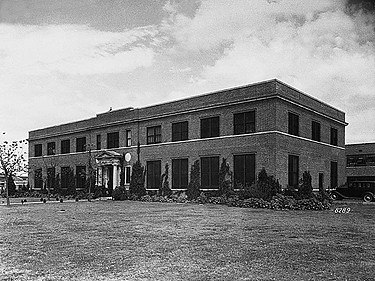
In this 1930's era building, the computers plotted man's path to the moon. NASA Photo.
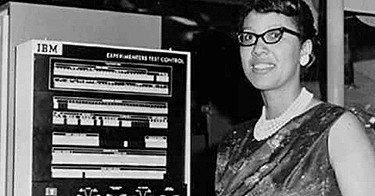
Dorothy Vaughn. NASA Photo.
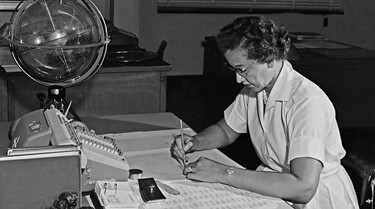
Katherine Johnson. NASA Photo.
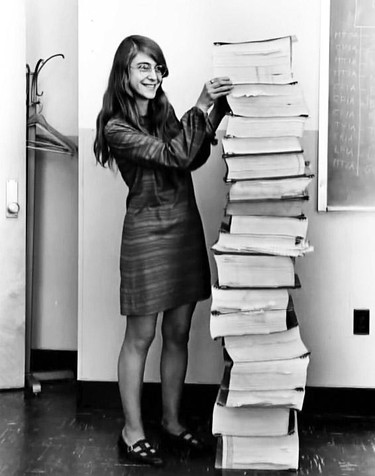
Margaret Hamilton with the printout of the Apollo AGC Software. NASA.
Margaret Hamilton
Software Engineer
Margaret Hamilton was 33 years old when she worked as director of software engineering at the MIT Instrumentation Laboratory. She and her team defined the design and testing criteria for the software that ran the onboard computer on the Lunar Module and developed the concepts of asynchronous flight software and priority scheduling which saved the Apollo computers from crashing during overloads such as the ones that occurred during the Apollo 11 descent to the moon (the 1201 and 1202 alarms).
The Journey of Apollo Eight
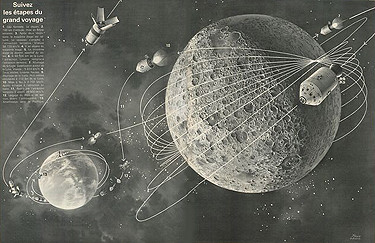
A particularly beautiful diagram of the journey to the moon.
(NASA)
Oleksandr Ignatyevich Shargei
Ukranian Spaceflight Scientist
On June 21, 1897 the world celebrates the birthday of Yuriy Vasilievich Kondratyuk, the famous Ukrainian author of the “route kondratyuka” which the Apollo spacecraft and Lunar Module took to the moon, creating the concept of Lunar Orbit Rendezvous. His real name is Oleksandr Ignatyevich Shargei. He changed it because of the danger posed by the Soviet Union to upper-class Ukranians. This did not prevent him from becoming one of the most famous inventors in the world.
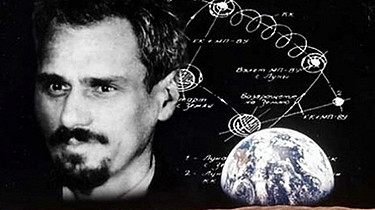
Oleksandr Ignatyevich Shargei plotted the course of Lunar Orbit Rendezvous, which was used to put Apollo astronauts on the moon. NASA's John Cornelius Houbolt and Thomas Dolan of Vought Astronautics referred to Sargei's work as they developed the concept for use by the Apollo program.
Tom Dolan and John Houbolt
Thomas Dolan was an American engineer who proposed the first fully developed concept of Lunar orbit rendezvous for the Apollo program while working at Vought Astronautics. Dolan referred to his LOR study concept as Manned Lunar Landing and Return (MALLAR), and it was largely ignored by NASA administrators until Langley engineer John Houbolt began championing the concept in 1961. The proposed idea outlined a smaller spacecraft dedicated only to operate in the vacuum of space. This spacecraft could act as sort of a shuttle between an orbiting "command module" in Lunar orbit and the surface of the Moon. Following this mission profile required the Command/Service Module and Lunar Module to fly all the way to the moon together and undock while in orbit around the moon, at which point the Lunar Module would land on the moon. In order to return, it would lift off again into lunar orbit and perform an orbital rendezvous with the Command/Service Module. The lander's ascent stage would be left behind in orbit, and the crew would return home using the Command/Service Module. This method saved a lot of weight in propellant and spacecraft mass, but did not gain widespread acceptance early on. The risks associated with Lunar orbit rendezvous were initially considered unacceptable by NASA officials. The Gemini missions would later prove that rendezvous and docking was indeed possible in space, paving the way for Dolan's idea to be put into practice. John Cornelius Houbolt was an aerospace engineer credited with leading the team behind the lunar orbit rendezvous (LOR) mission mode, a concept that was used to successfully land humans on the Moon and return them to Earth. This flight path was first endorsed by Wernher von Braun in June 1961 and was chosen for Apollo program in early 1962. The critical decision to use LOR was viewed as vital to ensuring that Man reached the Moon by the end of the decade as proposed by President John F. Kennedy. In the process, LOR saved time and billions of dollars by efficiently using existing rocket technology. (Wikipedia)
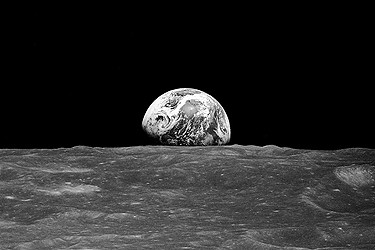
'Earthrise' Photo enhanced by Lunar Reconnaissance Orbiter Imagery. NASA Photo.
Revisiting 'Earthrise'
Lunar Reconnaissance Orbiter
“Well Done. Good and Faithful Servant”
Memorial Service for Ravi Zacharias

Tribute to Ravi Zacharias by Atlanta Street Artist Joe King. Ravi was not only a great Christian thinker, he built bridges between cultures, and that included his adopted home town of Atlanta, Georgia. Be a Bridge Builder! Be like Ravi!
[Click to Read]
